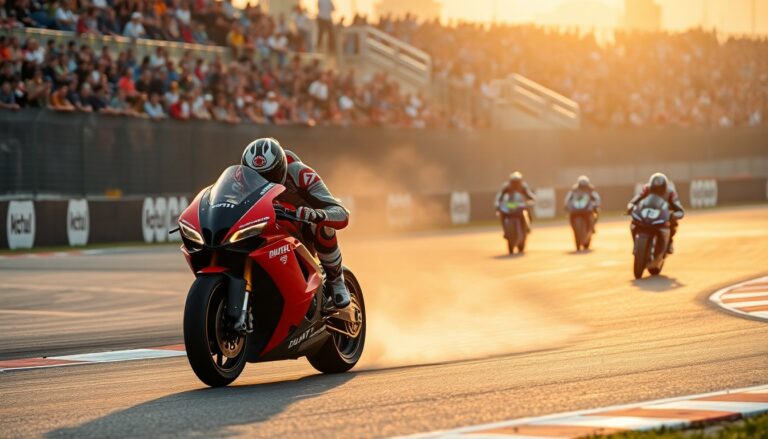Argomenti trattati
Alex Marquez shines at the Motul Grand Prix of the Valencian Community
The Motul Grand Prix of the Valencian Community delivered thrilling moments this weekend, highlighting the talent of Alex Marquez. After a day focused on testing components for the Ducati team, Marquez switched back to racing mode, successfully securing his second Sprint race victory of the season.
In contrast, Marco Bezzecchi, who started the race from pole position, encountered difficulties and finished in fifth place. Pedro Acosta also struggled during the race, allowing Marquez to capitalize on a crucial mistake made by Acosta.
Francesco Bagnaia continued to face a challenging season, struggling to regain his competitive edge after failing to secure a top ten finish during Friday’s qualifying. He encountered a disappointing Q1 session where a promising first sector time nearly advanced him, but a bike malfunction ultimately left him in 16th position on the grid. The Sprint concluded with Bagnaia finishing in 14th place, marking another setback in his season.
The challenges faced by Honda riders
This weekend posed significant challenges for the factory Honda team, as riders Luca Marini and Joan Mir both crashed out during the Sprint. Traditionally, Honda has taken measures to shield their bikes from public scrutiny after such incidents. However, this time, the damaged machines were left exposed, indicating a possible shift in the team’s approach. While the current version of the RC213V has shown enhancements, the lack of protective measures during this event has raised questions among observers.
A new role for Nicolo Bulega
In a notable development, Nicolo Bulega stepped in for the injured Marc Marquez, taking on both racing and testing responsibilities for the Ducati team. He participated in the ongoing development of the MotoGP bike, focusing on various aerodynamic components. His experience in the World Superbike Championship proved beneficial, offering valuable insights into machine performance. During Friday’s practice sessions, Bulega and Alex Marquez conducted tests with different aerodynamic devices, collecting essential data for future races.
The evolution of MotoGP aerodynamics
The quest for aerodynamic efficiency in MotoGP
The relentless pursuit of aerodynamic efficiency among MotoGP engineers is increasingly evident. As lap times tighten, even the smallest enhancements can lead to significant performance improvements. Ducati has introduced an innovative tail design aimed at increasing rear downforce. Meanwhile, teams like Aprilia and Honda are experimenting with wing designs positioned behind the riders to achieve similar objectives. The varying adoption of these strategies among manufacturers indicates a cautious approach to the potential gains from such modifications.
Particularly noteworthy is the seat wing on the Aprilia RS-GP, which features a high angle of attack. This design enables the wing to function effectively even in turbulent airflow, maximizing downforce during critical braking moments when the rider can access cleaner air. These engineering advancements reflect the ongoing evolution within the sport, as teams strive to optimize performance under diverse race conditions.
Honda’s success in Moto3
Honda achieved significant success in the Moto3 category, dominating the morning practice session and securing the top two spots in qualifying. Adrian Fernandez’s impressive pole position underscored the strength of the Honda team, while Raul Fernandez made a notable appearance by finishing fourth in the MotoGP Sprint, highlighting the potential of the Aprilia riders.
The Motul Grand Prix of the Valencian Community showcased the unpredictable nature of MotoGP racing. Compelling performances and unforeseen challenges shaped the event’s narrative, keeping fans engaged. As teams continue to innovate and adapt, anticipation for upcoming races remains high.

